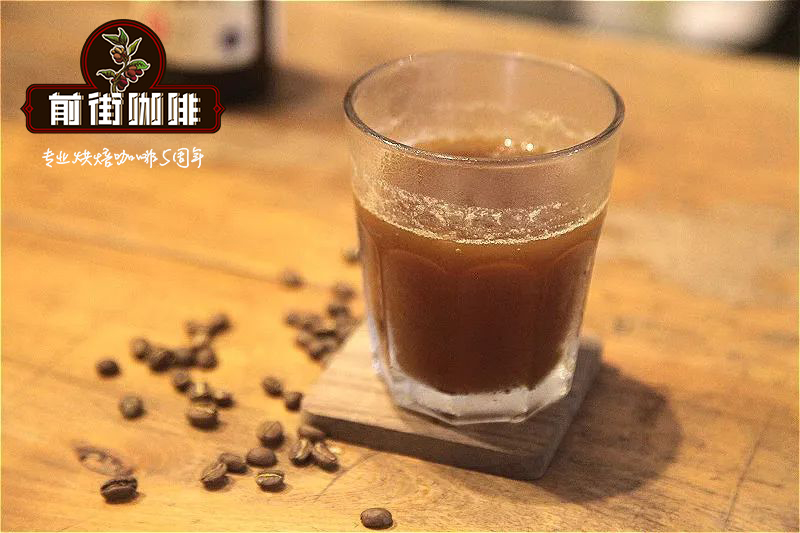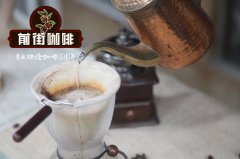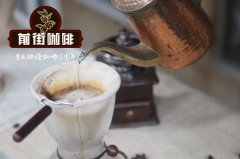The recommended parameters of hand-made Kenyan AA card Latin American coffee. How to wash coffee beans by double fermentation?

Professional coffee knowledge exchange More coffee bean information Please pay attention to coffee workshop (Weixin Official Accounts cafe_style)
Kenya Coffee Chiliga "Kenamoy Processing Plant" Bourbon Variety Wash
Kenya Kirinyaga“Kainamui Factory”Bourbon Washed
to The region is located in Kirinyaga, southern Kenya.
Kiriniyaga is known alongside Nyeri for its high quality coffee producing areas and its proximity to black tea producing areas.
products Bourbon species Bourbon species
Method of extraction Manual extraction
precision method water washing treatment
Drying method 100% natural sun (on the trellis)
standard Height 1,700 m
port Stunning coffee with rich fruit flavours,
Ripe and sweet, blackberry and rose hips, light black tea and floral notes.
regulations Box AA (Soil: Red Ash Soil)
Kenyan coffee premium beans purchased by Nairobi exporters at Kenyan coffee auction. Kenya's growing regions, particularly Kirinyaga Nyeri, are known for producing high quality coffee. It is also an area of great interest to European and American coffee makers, with an impressive aroma and variegated fruit taste. The other items purchased this time are also highly rated coffee selections. It's all Kenyan coffee with a great aroma finish.
Kenya Kainamui Gichugu Today introduces a coffee Xiaobian that is a must-have coffee at home The taste is gentle, the fruit is sweet and fragrant enough. The point is, you order the same punch. We tried the brew, cold brew and espresso, and it didn't disappoint: ) BTW, for those of you interested in trying Australia brand name coffee beans, remember this weekend PMQ!
Generally speaking, the thickness of coffee powder can be divided into: coarse powder, medium powder, medium fine powder, fine powder, very fine powder, five grades.
Light baking will use medium fine powder, suitable for light baking beans, today with filter cup: Hario v60 transparent resin, grinding scale: small Fuji ghost tooth 3.5, white sugar size (the most common white sugar in supermarkets, a little larger than that), demonstration with [Kenya Asali] to brew teaching:
Kenyan AA coffee beans brewing advice: light roasted Kenya AA coffee beans suitable for 90-92 water temperature to extract, deep roasted Kenya AA coffee beans suitable for 86-88 degrees temperature
First injection
Inject a small water column from the center, and then slowly circle out, just like gently spreading a layer of water on the flour. Although it is a small water column, please pay attention not to slow down the circle speed deliberately, because once the circle speed is too slow, the water column will flow in a single direction, so that the draft of the flour layer is uneven.
After the end of the first water supply, coffee powder particles will push each other because of exhaust, resulting in expansion phenomenon, in the expansion to the highest point or fast static (surface water will slowly dry), is the second time to add water time point.
Second water injection
The second water injection also starts from the middle, injecting a small water column into the bottom of the powder layer. In order to concentrate the penetration force of the water column, the circle movement range should be small, about the size of a dollar coin, and then go out. At the beginning of the second water supply, pay attention to the amount of water, try not to exceed the height of the powder layer, that is, when the water column is close to the filter paper, you can stop the water supply.
In the initial water supply, because most of the coffee powder particles are in a state of vigorous exhaust, and let the air flow generated by it, it will soon be transmitted to the edge of the filter paper, so if you give too much water at this time, it will bring water to both sides instead of the bottom layer, so use small water column to accelerate the circle to avoid these problems.
As the originally thick powder layer on the filter paper edge becomes heavier due to draft, and as the water level drops and becomes thinner, the water level drops to half, and the third water injection can be carried out.
Third water injection
From the beginning of the third water supply, it is necessary to observe the amplitude of water level drop, also from the center of the water supply circle, water volume should not exceed the height of the powder layer, then it will be observed that the foam proportion has occupied the full surface, the third water injection will increase the coffee particles tumbling, so that all deposited particles tumbling, and then dissolved soluble substances.
Rolling particles will stop adding water and start to rest. At this time, it is necessary to rely on the flow rate caused by the falling water level to make the coffee particles friction. Therefore, once the water is stopped, the coffee powder particles will sink and cause blockage. Therefore, pay special attention to the rhythm of adding water.
If the water is cut off too many times, it is equivalent to letting the coffee powder particles soak in the water all the time, which will cause the coffee extraction at the end to produce astringency and miscellaneous taste.
When close to the set amount (15 g powder, 225 g water) is reached, the filter cup can be removed.
END
Important Notice :
前街咖啡 FrontStreet Coffee has moved to new addredd:
FrontStreet Coffee Address: 315,Donghua East Road,GuangZhou
Tel:020 38364473
- Prev

Where is the Nieriga Chasha processing Plant in Kenya _ characteristics of coffee beans in Nieli, Kenya
Professional coffee knowledge exchange more coffee bean information please follow the coffee workshop (Wechat official account cafe_style) Kenya Coffee-Kachasha AA TOP Kenya Gachatha AA TOP ■ country: Kenya ■ production area: Nyeri ■ altitude: 1500 m ■ treatment: washing ■ grade: AA TOP ■ varieties: SL28, SL34 ■ flavor description: covered basin
- Next

Introduction of Kenya Ruby Cooperative Coffee beans in 2018 New season. What is the flavor of pure SL varieties?
Professional coffee knowledge exchange more coffee bean information please follow the coffee workshop (Wechat official account cafe_style) 2018 new season Kenya coffee-ruby cooperative exquisite washing black plum flavor pure SL coffee producing area. Nyeri Country, Kenya processing plant. Githiru Cooperative altitude. 1650 M beans. SL28 & SL34 /
Related
- Detailed explanation of Jadeite planting Land in Panamanian Jadeite Manor introduction to the grading system of Jadeite competitive bidding, Red bid, Green bid and Rose Summer
- Story of Coffee planting in Brenka region of Costa Rica Stonehenge Manor anaerobic heavy honey treatment of flavor mouth
- What's on the barrel of Blue Mountain Coffee beans?
- Can American coffee also pull flowers? How to use hot American style to pull out a good-looking pattern?
- Can you make a cold extract with coffee beans? What is the right proportion for cold-extracted coffee formula?
- Indonesian PWN Gold Mandrine Coffee Origin Features Flavor How to Chong? Mandolin coffee is American.
- A brief introduction to the flavor characteristics of Brazilian yellow bourbon coffee beans
- What is the effect of different water quality on the flavor of cold-extracted coffee? What kind of water is best for brewing coffee?
- Why do you think of Rose Summer whenever you mention Panamanian coffee?
- Introduction to the characteristics of authentic blue mountain coffee bean producing areas? What is the CIB Coffee Authority in Jamaica?

